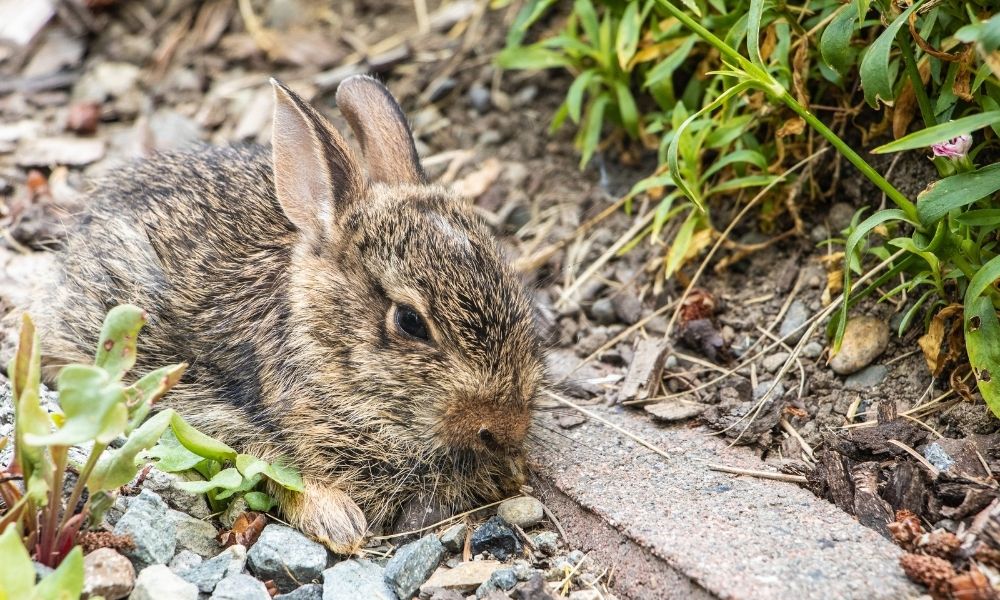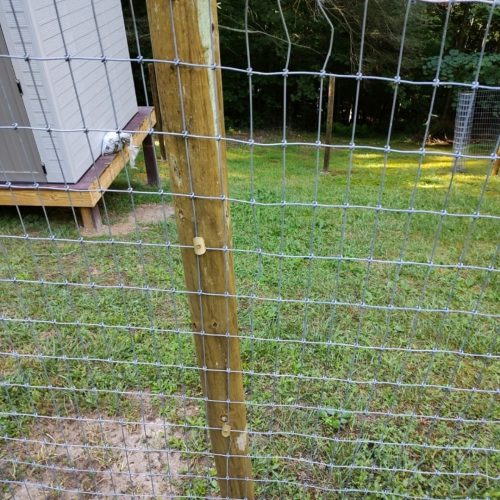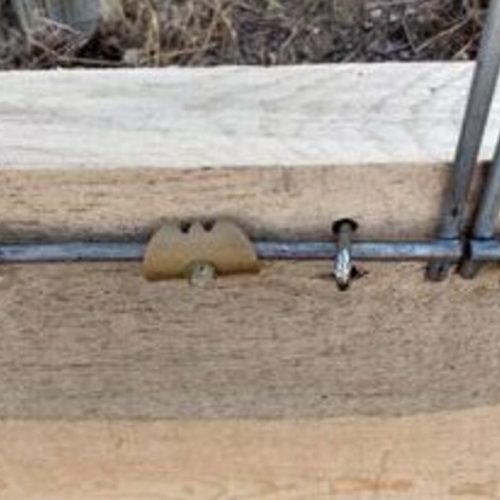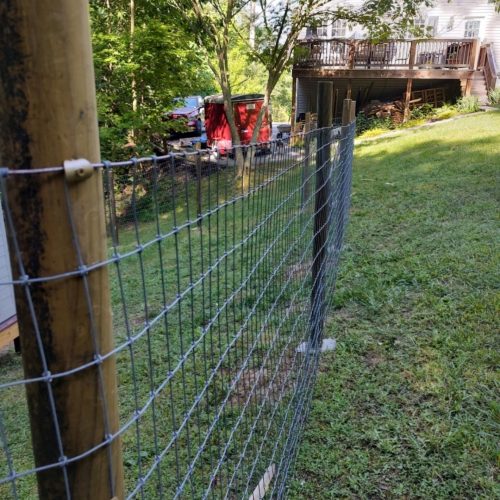A few questions have been asked of Josh the Cat’s Claw Cowboy to clarify a couple things about the tricks of fencing on a slope. This blog will help answer some of those questions and give readers a mental image of how to best tackle the project. Fencing on a slope can be tricky as the fence has to be functional yet also eye-catching. I mainly do agricultural fencing, so I’m coming from the point of view of keeping cattle or horses contained. There are several factors that play a role in how to fence a slope, which we will discuss further.
How Terrain Plays a Role in Fencing on a Slope
The largest obstacle and deciding factor on how to go about the project is the terrain. There are so many different types of terrain that it’s hard to say one shoe fits all, but they can be fairly similar with little modifications for each project. Gentle slopes can be fenced similarly to flat ground. As peaks and valleys become more pronounced, a solid wood or pipe post needs to be placed on the crest and possibly at the valley, or a deadman (an anchor in the ground) needs to be used to hold wires down. As slopes increase in angle, braces need to be placed at the top and bottom, keeping wires tight, so that the wires on the slope can be independent from the rest of the fence line.
Fencing across sharp drops, similar to steep banks on creek edges, is really pretty easy. A single pipe, wood post, or even a brace could be put on either side of the sharp drop. The main wires can run smoothly across to the second post or brace and keep going. Then separate wires can be run down into the sharp drop, hole, or creek and anchored down to their proper heights over to the 2nd post.
My personal favorite is to take a dozer and make them into gentle slopes. Cat’s Claw fasteners have greatly improved the holding power on wires on slopes compared to the common fence staple. In the past, two staples would be placed parallel to the wire, one on top of the other to support the wire, and then a third staple would be threaded through the two. This was done on a post at the crest and the valley for each wire, allowing the wire to be stretched through. Another method was placing spikes in the post to support the wires. Obviously, with both of these methods, it only works with wood posts. Now, with the Cat’s Claws, pipe or wood can be used as posts, and then the coordinating claws are used. The claws hold the wire to the post similar to a common staple, but they have the holding power of a spike. In the past, when using staples, the tension on the wire would work the staples out. Cat’s claws are tested and proven to have superior holding power, keeping the quality of the fence longer with less maintenance.
Putting Posts on a Slope
When putting posts on a slope, the easiest way to keep them straight is to use a level. This proves they are perfectly plum because the eyes can be deceiving, especially on a slope. This is for the solid wood and pipe posts. When pounding T posts, the eye is a close enough guess because they bend more easily.
Now the ones I’m most familiar with are in my area in SE Montana, where a guy can run straight into a huge gumbo knob or large cut banks. In these places, it’s best to put an H brace at the top and one at the bottom. A wire cow panel can be secured to the brace with Cat’s Claw Fasteners and extended out over the edge or up to the cliff bank to keep livestock from going around. In a mountainous country with lots of snowfall on slopes away from the prevailing wind. The fence will be under snow drifts and will need to be maintained every year after snowmelt.
A lay-down style fence could be used, again using Cat’s Claws to attach wires to stays. An H brace on top and bottom is required to keep the fence tight. Snow has an incredible amount of weight and destructive power, so nothing is 100%. The grade of the slope is a factor in making a fence function and look nice. I always put my posts perfectly plum regardless of how steep the slope is.
The alternative is to put the posts perpendicular to the slope. To me, that doesn’t look as nice. The wire or rails then run parallel to the grade. Gentle grade slopes are easy and can be fenced the same as flat ground. As the grade increases, a solid anchor point is required at the crest and valley. This could be in the form of an H brace or a solid wood or pipe post. Here again, when using wire, Cat’s Claw fasteners are the ticket due to their superior holding power. Soil type can determine how a slope is fenced. In extremely rocky places or on sandstone rims, creativity is needed to secure wires. Shale, sand, and gravel also have very poor holding power, but with the advancement of technology, posts or pipes can be pounded deep to provide the best holding power.
Getting Wires at Proper Tension on a Slope
The last question to be answered is how to get wires at the proper tension on a slope or in holes. The way I usually do it is to stretch the wire tight, then go back to my low points and use my body weight to pull the wire down to my post or deadman (ground anchor) wires. If it’s too easy to pull down, I tighten up and start again. If it’s too tight and I can’t get it down, I back the wire off and try again. When I’m finished, I like the wire to be almost bow string tight. First, this makes a classy, sharp looking fence, and second, it takes all the stretch out of the wire so it doesn’t sag later. Obviously, having two people makes this task easier because one can be running the stretchers while the other is pulling the wires down. Most things I do by myself, so it involves a lot more walking or running back and forth.
Check out Cat’s Claw Fasteners for Your Slope Fencing
A quick recap of the consistent points throughout has a solid anchor point on the top and bottom of the slope. Keep your posts plum and your wires or rails parallel to the slope. Use Cat’s Claw Fasteners for the most effective holding power of wire to posts. This will be both functional and attractive. These are the answers I have for the questions asked about the tactics of fence on a slope.
Have any questions for Josh the Cat’s Claw Cowboy? Send them to Chava@catsclawfasteners.com and our Head Cat Collector will send them his way! Be sure to visit our site for more helpful tips for your fencing projects.
Unleash your curiosity with Cat’s Claw Fasteners! Contact us with your inquiries and connect with our Head Cat Collector, Chava, at chava@catsclawfasteners.com. Stay informed with our blog and follow us on Facebook, Instagram, Pinterest, and Youtube for more exciting content!
Read next: Fencing and gates








